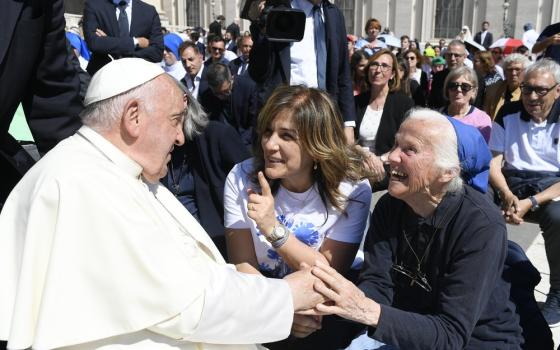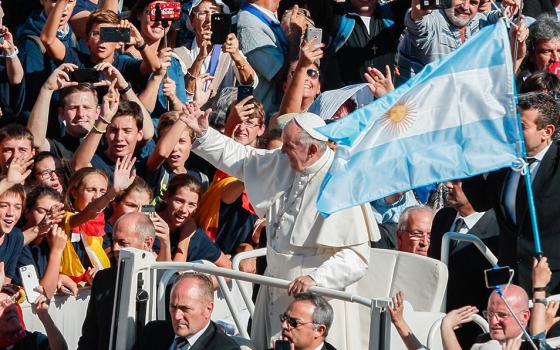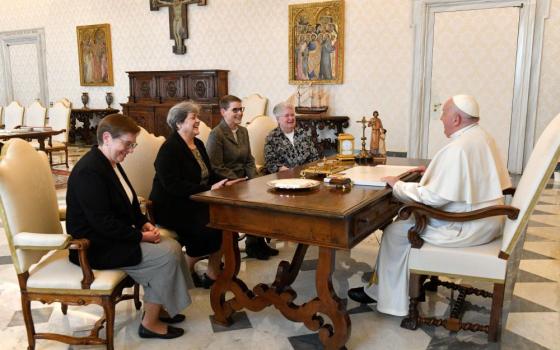
(Pixabay/Mohamed Hassan)
From my own experience living and working in a small village — Iseyin in Oyo state, Nigeria (where Yoruba culture is very alive and rich) — and from experiences of other Nigerian cultures, I know how important dance is to us. Some of our dance rituals have been integrated into Catholic liturgy as well.
For us Africans, dance is as important in life as eating and breathing. It is a complete and independent language. It comes naturally to us; we are born into it and live it, as we are taught the meaning of dance steps and the drumming that goes with it. The dance steps are specific to a particular tribe/area or country, and have more influence than signs, more expert articulation than words.
Dance is a declaration of life and its lasting feelings of delight, love, bitterness and trust. Without deep feeling, there is no African dance. This importance is obvious in its depiction of everyday activities, where it raises common life activities to artistry. We observe this in movements that reflect the effortlessness and cadences of even the simplest actions like strolling down a lane, beating grain into meal — even eating.
It is a medium that embodies the encounters of life: delight, satisfaction, love or frustration. The body of the African artist floods with delight and essentiality. It shudders, vibrates, emanates all human feelings. Regardless of the artist's shape — thick or slight, round or smooth, frail or ripped, huge or little — as long as feelings are not quelled and smothered, and don't confine movements, the body can become euphoric, appealing, overwhelming and attractive.
Advertisement
There are two significant types of African dance. The first is strict, which is primarily ceremonial and marks transitional experiences, such as movement to stages of adulthood, weddings or other special life circumstances. The Yoruba women, for instance, at times of extreme distress, dance to pay tribute to Sango, the god of thunder and lightning to attain his healing power. Interestingly, Sango is one of the most worshiped gods worldwide. Hausa ladies of sub-Saharan Africa also discover emotional healing and soul ownership in Bori tribal dances.
The other type of African dance is social and has numerous uses that help keep local community life friendly and lively, strengthening a feeling of security — that all is well with the world. Dance can narrate a group's customs around community functions: harvest festivities, burial services, crowning of chiefs, competitions — all with recitations of local history, sayings and verses. One example is the Nigerian Gelede dance.
Dance also cultivates the spiritual life of groups by helping individuals and the entire community understand their relationship to the divine. The African sense of the holy is embedded in the material world. They do not distinguish between the holy/everyday life, strict/lenient, profound/material. In fact, in numerous African dialects, there is no word for religion, because an individual's life is recognized as a complete spiritual embodiment of their way of viewing the world.
Consequently, when people die, and become part of the body of spiritual ancestors, they continue to have a significant part in the life of African people. The dead (holy people) are accepted as living on in the realm of the soul (spirit world). In this structure, they have heavenly powers. They look after their living relatives with compassionate interest, but also have the capacity to cause difficulty if they feel they are being disregarded.
Therefore, ancestors are acknowledged, particularly at memorial services and commemorations so they will listen to the intercessions of the living. They exercise special powers with God Almighty, interceding to him for their relatives. This need to have ancestors as intercessors makes it important to pay tribute to them and guarantees that those who do will be well received when they join the soul world. All these beliefs are danced out in ceremonial movements, interfacing the powers of different divinities with the one who has died and the local community to which s/he belonged; in this way the presence of a higher universe is declared.
Dance is also a teaching device that can illustrate appropriate social behaviors and good qualities — at times even censure individuals or groups. But African dance always tells a story that portrays the historical backdrop of a local area and builds community networks. As these community networks have changed due to changing political and financial environments, the role of dance has also adjusted, but has never lost its power to strengthen the spiritual and social prosperity of African culture.
Dance is also a teaching device that can illustrate appropriate social behaviors and good qualities — at times even censure individuals or groups. But African dance always tells a story that portrays the historical backdrop of a local area and builds community networks.
As in all communally-based cultures, universal participation is also the norm for dance; it includes both artists and spectators. Even in strict ceremonial dance, in all African communities at some point spectators will join the artists. And throughout Africa the many varieties of dance include "polycentrism," in which different portions of a dancer's body move to isolated rhythms inside the music — all at the same time.
Development and musicality can't be isolated in African dance. Precise twisting of arms, legs, and middle; shoulder and hip movements; scraping, stepping and bouncing advances; topsy-turvy utilization of the body; and smooth motion are all important for African dance. The uniqueness is that head and shoulders may be moving to one rhythm and the lower body to a different one. For those highly skilled, there may be up to three rhythms being followed by different parts of the body. Needless to say, this type of dance is very hard to master. It begins with one rhythm and gradually develops into further intricacy. Children begin learning this unique way of dance as soon as they are born and perhaps even before.
Helping to create the mood and rhythm is skilled drumming, another important part of African dance and culture. Drumming inspires spontaneous dancing and singing but it is also an important form of local communication, reinforcing strong social legacy. Specific drumbeats can identify particular groups and local areas whereby each unique gathering of people can perceive the message of their particular drumbeat and its purpose. At times, in dance, the drumbeat is talking and giving messages while at the same time coordinating the artists and the listeners on what to do. This is especially true of the Yoruba, who use "talking drums" in their dances. Drumming is often accompanied by clapping, stomping feet and singing. A skilled drummer artist can coordinate both the tone and mood of the music and the style of dance, unifying dancers and drummers.
Stealthy drumming and dance even became vehicles of communication during the 16th-century slave trade. I heard stories told about slave proprietors, who, recognizing the importance of these forms of communication, were determined not to allow communication among the slaves, and kept them in chains. However, these chained men and women could not be stopped. They learned to move their hips and body parts in new forms of communication, creating new languages. Even in confinement, they supported the soul and significance of music and dance.
Whether therapeutic, social or religious, dance among African people is unique. It certainly enriches my life because it so vividly reflects our lives, beliefs and values, and gives us a way to celebrate every aspect of life.






